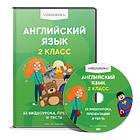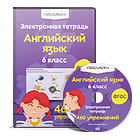
Welcome to Australia!!!!!!

How much do you know about Australia ?
1. Australia is the … of all continents.
2 . Australia is the … country in the world.
- A) smallest and flattest
- B) biggest and flattest
- C) biggest and driest
- D) smallest and wettest
- A) smallest
- B) largest
- C) sixth largest
- D) fourth largest

3. There are … states and two territories in the Commonwealth of Australia
a) 50
b) 13
c) 6
d) 5

4. A domestic animal which outnumbers people in Australia is a … .
- A) rabbit
- B) cow
- C) cat
- D) sheep

5. When did Europeans settle in Australia?
- A) 1488
- B) 1788
- C) 1492
- D) 1901
6. Which is the capital of Australia?
- A) Sydney
- B) Melbourne
- C) Canberra
- D) Brisbane

7. The center of the continent Australia is taken by the … .
- A) mountains
- B) lakes
- C) forests
- D) deserts

- Which two animals can you see on the Australian coat of arms?
- A) Kangaroo and Dingo
- B) Koala and Parrot
- C) Kangaroo and Emu
9. Which city is Australia’s oldest and largest?
- A) Sydney
- B) Melbourne
- C) Canberra

11. Who discovered Australia?
- A) Christopher
Columbus
- B) Captain Cook
- C) Lewis and Clark
- Who are the Australian natives?
- A) Eskimos
- B) Aborigines
- C) Indians

12. Approximately how many
nationalities live in Australia?
a) 200 b) 20 c) 75 d) 5
- a) 200 b) 20 c) 75 d) 5
13. What is the official language in Australia?
- 13. What is the official language in Australia?
a) French
- a) French
b) German
c) English
- b) German c) English
- b) German c) English

- On which season do Australians celebrate Christmas?
- a) spring
- b) summer
- c) autumn
- d) winter

- Is Sydney in the North of Australia?
a) Yes b) No
16. Which is the most impressive
building in Sydney?
a) Zoo b) Opera House c) Concert Hall

17. How many people live in
Sydney?
- A) 1 million
- B) 4 million
- C) 300 thousand

18. The most beautiful mountain in Australia is …
- A) Uluru
- B) Esperance
- C) Everest

19. Most children in the outback of Australia use …
- A) schools at home
- B) schools of the air
- C) schools on the radio

20. Australia’s national day,
- 20. Australia’s national day,
Australia Day is on …
А) the 12 th of December
B) the 4th of June
C) the 26th of January

Australia’s best-known animals are kangaroo, the koala and the dingo. There are 50 species of kangaroo. The koala is the best loved off all Australian animals.

About 400 species of birds in Australia are found nowhere else in the world.
There are 55 species of parrots in Australia. They are very colorful.

Australia’s Unique History
- Captain James Cook discovered Australia in 1770. He was sent to discover the huge land that many people believed was south of the equator. He landed south of present day Sydney in New South Wales. He claimed this part of the land for the king of England.
- At this time England was having many social problems. Unemployment was high. Crime was one of the greatest problems. The government punished people by sending them to prison. England’s solution to crowded prisons was to send prisoners to the far colonies. They could work off their prison sentences as labourers in the new colonies and eventually earn their freedom. Therefore, in 1788 Captain Arthur Philip commanded eleven ships to Australia. About 750 of the 1000 people on the ships were convicts. These first settlers were greeted by the Aborigines, the first inhabitants of Australia. There were an estimated 300,000 Aborigines living in Australia at that time.
- Great Britain claimed all of Australia in 1827. In 1851 gold was discovered about 300 km west of Sydney. People rushed to the gold fields to find their fortunes. This attracted robbers called bushrangers. Ned Kelly was a famous bushranger. He was a very clever outlaw.
- In 1901 Australia became a nation within the British Empire under Queen Victoria’s rule. It was called the Commonwealth of Australia. Australia had a very limited constitution. Great Britain continued to make decisions regarding all of Australia’s foreign affairs.
- In 1931 Australia gained independence from Great Britain.

The Great Barrier Reef Australia is the guardian of a unique wonder which literally and figuratively is part of the world’s heritage- the unspoiled treasure of the sparkling Great Barrier Reef. The seemingly endless chain of reefs that guards the eastern coast of Queensland is the world’s biggest coral reef system- a massive skein of submerged beauty, studded with white sandbars and inviting green islands, that stretches 2,300 km from the Gulf of Papua to just beyond the Tropic of Capricorn at Lady Elliot Island. More than 2,100 separate reefs make up the main barrier. No place on land has a greater variety of life. The Great Barrier Reef has fish in an estimated 1,500 variations of shape, colour and size. Some of these fish may be a centimeter or less long. Others, like the constantly cruising tiger shark, grow to weigh a tonne or more. Turtles come to nest in huge numbers on many reef islands.

Australia: The Unfinished Dream Australia is in many ways all things to all men. To the Texas rancher, it’s the great escape to the last frontier; to the young troubled teacher from Newark, New Jersey, it’s light and air and freedom from discipline problems; to the businessman from Manchester and Mannheim, it offers great opportunities in a country that is carefully backing into Asia. Australia as a country is, of course, the unfinished dream. It is a continent of almost unbelievable natural wealth, where breathtaking discoveries of uranium, copper, bauxite or coal are casually explained as just one more example of God-given luck, but where, especially for the young, all the modern problems of pollution, urban decay, and social inequality have become real enough to worry about in the future. So although Australia desperately wants geologists, engineers, chemists and metallurgists, it also needs architects, town planners, social workers, teachers and nurses to help build the fair and comfortable society that is now well within its grasp.

- Advance Australia Fair
The national anthem
Australia all let us rejoice
For we are young and we are free;
We’ve golden soil and wealth for toil;
Our home is girt by sea;
Our land abounds in nature’s gifts
Of beauty rich and rare;
In history’s page, let every stage
Advance Australia’s Fair.
In joyful strains then let us sing,
Advance Australia Fair
.
Beneath our radiant Southern Cross
We’ll toil hearts and hands;
To make this Commonwealth of ours
Renowned of all the lands;
For those who’ve come across the seas
We’ve boundless plains to share;
With courage let us all combine
To Advance Australia Fair.
In joyful strains then let us sing,
Advance Australia Fair.

Australia’s coat of arms- the official emblem of the Australian government- was granted by King George V in 1912. the arms consist of a shield containing the badges of the six states. The supporters are native Australian fauna- a kangaroo and an emy. A yellow- flowered native plant, wattle, also appears in the design. Australia’s national day, Australia Day, on 26 January marks the date in 1788 when Captain Arthur Philip, of the British Royal Navy, commanded a fleet of 11 ships and sailed into port Jackson. (Sydney Cove). The flag of Australia is the only one to fly over a whole continent. The small Union Jack represents the historical link with Britain, the large seven-pointed star represents the six states and the Territories, and the small stars form the Southern Cross- a prominent feature of the southern hemisphere night sky.

Aborigines Aborigines came to Australia over 40,000 years ago. They did not read or write, so they have no history books to study. Every Aborigine had one main job. This was to find the job. Both men and women were expert hunters, and everyone had to know what was safe to eat and what was not. Aborigines spent over three-quarters of the day gathering wood. Their weapons consisted of a wood spear, a club and a boomerang. Aborigines did not build houses because they were constantly moving to new places hunting for food. There was no need for clothes for them because it was very hot. Water was the important thing they needed to live. People from Great Britain came to Australia over 200 years ago to take the land. They had diseases that killed many Aborigines. Today there are few true Aborigines left in Australia.

Australian Endangered Species
No one will ever see a paradise parrot fly across the sky again. Paradise parrots are extinct. Extinction is forever.
Since the settlement of Australia by Europeans in 1788, thirty species of mammals and birds and about 100 species of plants have become extinct. A further 57 species of mammals, birds, reptiles, frogs and fish, many hundreds of species of invertebrates , and 209 plants are considered endangered and could become extinct within ten to twenty years.
The main cause of extinction is the destruction of habitats. A habitat contains all that a living thing needs to survive: space, light, water, food and shelter. Habitat destruction may occur when vegetation is cleared for agriculture, forestry, cities, mines or roads.
Today we have a far greater understanding of the threats our wildlife faces than did early settlers. Yet we still have created added threats such as urban and industrial development, pollution, and pet and fur trade.
People are the only animals with the power to save endangered species.

The koala The koala is one of the best known and most loved animals in Australia . Koalas live in lightly wooded areas containing suitable food. They are very fussy eaters, feeding almost entirely on eucalyptus leaves. Koalas seldom drink as they obtain enough water from the diet of leaves. The koala sleeps in a fork of a tree for the most of the day and moves about and feeds at night. It is most active just after sunset. The koala is often incorrectly called a ‘Koala Bear’. It is not related to the bear family at all, as it is a marsupial mammal, not a placental. A koala’s average lifespan in the wild is about 12 years, but they have been known to leave for over 15 years in captivity.

What lovely trees and, essentially, how beautiful life must have been here! Anton Chekhov
- This is the end!!!!!!

 Получите свидетельство
Получите свидетельство Вход
Вход












 Презентация на тему "Welcome to Australia" для проведения урока викторины (823 KB)
Презентация на тему "Welcome to Australia" для проведения урока викторины (823 KB)
 0
0 553
553 10
10 Нравится
0
Нравится
0


